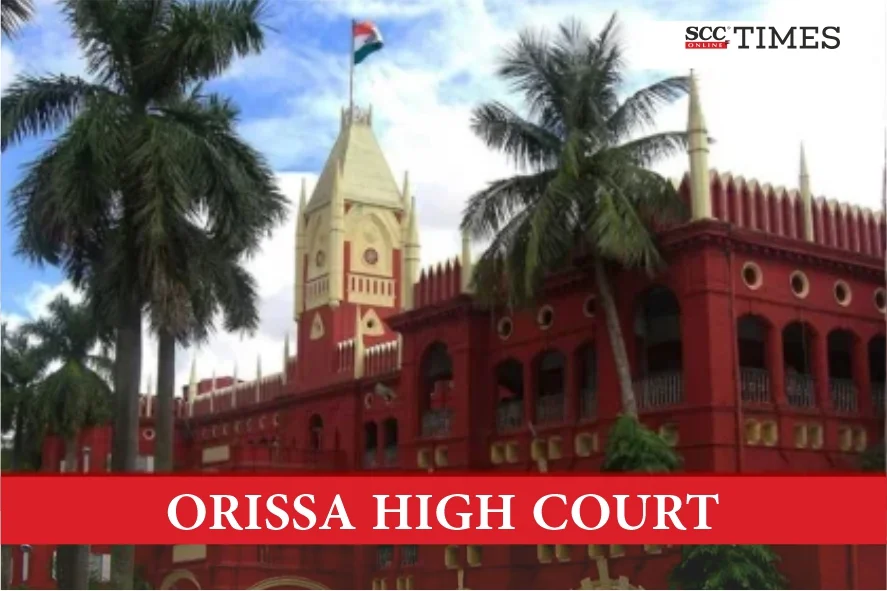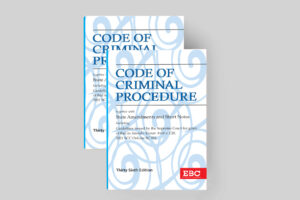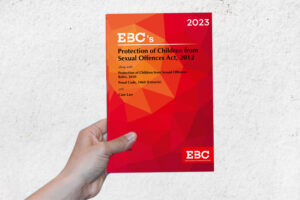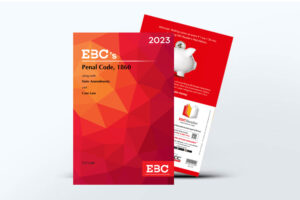Orissa High Court: A reference under Section 366 of the Code of Criminal Procedure, 1973 (‘CrPC’) was filed by the 3rd Additional Sessions Judge -cum- Presiding Officer, Children’s Court, Cuttack (‘Trial Court’) for confirmation of the death sentence imposed on the convict. A criminal appeal was filed by the convict against the judgment and order of conviction passed by the Trial Court. The Division Bench of SK Sahoo and RK Pattanaik, JJ. dismissed the death sentence reference and allowed the criminal appeal in part.
Factual Matrix
In the matter at hand, the convict was charged for offences under Sections 363, 364, 376-AB and 302 of the Penal Code, 1860 (‘IPC’) read with Section 6 of the Protection of Children from Sexual Offences Act, 2012 (‘POCSO Act’). It was alleged that he kidnapped the minor granddaughter of the informant, aged about six years (‘deceased minor’) and committed rape, and murdered her. The Trial Court, in the impugned decision, awarded death sentence for the offence under Section 302 of the IPC so also for the offence under Section 376-AB of the IPC and sentenced him to undergo rigorous imprisonment for a period of seven years and to pay a fine of Rs.20,000/-, in default, to undergo further rigorous imprisonment for one year for the offence under Section 363 of the IPC, however no separate sentence was awarded for the offence under Section 6 of the POCSO Act in view of the Section 42 of the said Act.
Analysis and Decision
Considering that the present case was based on circumstantial evidences, the Court firstly dealt with the first circumstance- that the deceased minor was playing in front of her house at about 6.30 to 7.30 p.m. on 21-04-2018 and there was a power failure in the locality at that time.
The Court noted that the Trial Court relied on the circumstance that there was a power cut. On perusal of the statement of the Executive Engineer, Electrical Division, Investigating Officers and other witnesses, the Court noted that there was load shedding in the village on the date of occurrence i.e. 21-04-2018 in the evening hours from 6.20 p.m. to 7.21 p.m. The Court also viewed that the evidence of the witness who was standing in the vicinity where the deceased minor and her brother were playing, thereof, that the convict was wandering nearby, cannot be doubted merely because he did not disclose before the family members of the deceased minor the fact that he had seen the convict near the deceased minor while she was playing, even after coming to know that the deceased minor was missing.
Second Circumstance- Missing of the deceased minor from the place where she was playing
The Court noted that the informant and mother of the deceased minor looked for her in their neighborhood when they suspected that she was missing. The Court also perused the statement of seven other prosecution witnesses, wherein it was stated that a girl child was missing in the evening hours on the date of occurrence. The Court said that nothing was brought out in the cross-examination to disbelieve their evidence, hence, the Court upheld the Trial Court’s view that the second circumstance was proved by the prosecution by leading adequate evidence.
Third Circumstance- Convict was last seen with the deceased minor
The Court said that the evidence of the witness standing near the deceased minor and her brother playing, that the convict was wandering nearby, was unshaken and consistent. The Court also said that the evidence of the elder brother of the deceased minor inspired the Court’s confidence in this regard. The Court also perused the statement of an Asha Karmi, whereby, it was stated that the convict visited the shop along with the deceased minor and bought chocolates for her and then proceeded towards the school along with the deceased minor. The Court took note of a similar statement made by another prosecution, wherein it was also stated that the convict was seen returning to his home in a disturbed state and soon thereafter, when the deceased minor was found in the school verandah with bleeding injuries, she was taken to the hospital.
The Court said that, if the IO had recorded statements of about 21 witnesses by the time the convict was forwarded to the Court, it was incumbent on the part of the IO to send such statements along with the forwarding report and the arrest memo etc., but only two sheets of Section 161 of the CrPC statement of the witness were sent. The Court stated that “mere delay in sending the statements of the witnesses already recorded to the Court while forwarding the accused would not make their evidence unacceptable unless something glaring is brought to the notice of the Court or proved otherwise that such statements were non-existent and subsequently created and ante-dated.”
Upon referring to various authorities on the subject, the Court viewed that non-sending of all the statements recorded while forwarding the accused to the Court, cannot be a ground to disbelieve the evidence of the witnesses examined to prove the last seen of the accused with the deceased even though it was a lapse or omission on the part of the IO who seems to have remained busy in the investigation. Hence, the Court viewed that the Trial Court had rightly held that the evidence of the witnesses was clinching, trustworthy and it inspired the Court’s confidence, proving that the deceased minor was last seen in the company of the accused beyond all reasonable doubt.
Plea of Alibi
In the statement under Section 313 of the CrPC, the Court noted that the accused took plea of alibi. Referring to Dudh Nath Pandey v. State of U.P., (1981) 2 SCC 166 and Binay Kumar Singh v. State of Bihar, (1997) 1 SCC 283, the Court said that it is incumbent upon the accused, who adopts the plea of alibi, to prove it with absolute certainty so as to exclude the possibility of his presence at the place of occurrence. The burden on the accused in such circumstances is rather heavy and strict proof is required for establishing the plea of alibi. In the present case, the accused except taking a plea that he went to watch Gangeswar Yatra, nothing was proved to substantiate such plea and it was his duty to explain such circumstance as to when he left the company of the deceased minor and such non-explanation by the accused provided an additional link in the chain of circumstances. Therefore, the Court viewed that the accused failed to establish the plea of alibi. The Court explained that the examination of an accused under Section 313 of the CrPC is not a mere formality. It is obligatory on the part of the accused, while being examined, to furnish explanation with respect to the incriminating circumstances associated with him and the Court must take note of such explanation.
Other important circumstances
After lengthy perusal of the statements and examination, the Court agreed with the Trial Court’s findings, that the deceased minor was found lying in an injured condition on the school verandah within a short time of last seen from where she was shifted to the hospital; that the scientific Officer found blood stain on the school verandah and also noticed chocolates lying there; that the accused was found absent from the village after the occurrence and he was apprehended by the IO on the next day; that some chocolates were found from the pocket of the deceased minor by the Medical Officer; that the blood stain found on the shirt of the accused matched with the blood group of the deceased minor; and that the accused on being taken on remand after confessing his guilt showed some places connected with the crime to the IO voluntarily. Hence, the Court viewed that all the circumstances cumulatively taken together formed a complete chain that led to the only irresistible conclusion that it was the accused who had perpetrated the crime.
Charge under Section 302 of the IPC
The Court noted that the doctor had stated that the cause of death of the deceased minor was due to coma as a result of blunt trauma injury to head and corresponding brain injury coupled with effects of hypoxic brain injury and did not mention in his report whether the death of the deceased minor was homicidal or accidental. The Court said that since the accused was responsible for causing various bodily injuries on the deceased minor and some of them were fatal to cause death in the ordinary course of nature and death was due to coma as a result of blunt trauma injury to head and corresponding brain injury coupled with effects of hypoxic brain injury, hence, it was sufficient to draw an inference that the accused intended to cause such bodily injuries as was sufficient to cause death. Thus, the Court viewed that clause ‘thirdly’ of Section 300 of the IPC was satisfied and therefore, the Trial Court was quite justified in holding that the accused was guilty under Section 302 of the IPC.
Charge under Section 376-AB of the IPC and Section 6 of the POCSO Act
Regarding the age of the deceased victim, the Court perused the statement of the Anganwadi worker who had stated that the deceased minor was studying in the Anganwadi and that in the Anganwadi Register, date of birth of the deceased minor was 02-05-2012 and as such by 21-04-2018, she was aged about five years and eleven months. Therefore, the Court agreed that the Trial Court had rightly concluded that the deceased minor was below twelve years of age at the time of occurrence. The Court perused the Doctor’s statement, whereby it was stated that the internal genital organs like uterus were intact and the vaginal canal was intact and there was no abnormality or injuries. The Court also noted that the hymen was deep-seated. Therefore, the Court said that when there was no other material available on record including circumstances to satisfy the ingredients of ‘rape’ or ‘aggravated penetrative sexual assault’ committed on the deceased minor, it would be too risky to convict the accused either under Section 376-AB of the IPC or under Section 6 of the POCSO Act. However, the Court viewed that the ingredients of offence under Section 354 of the IPC i.e. assault or use of criminal force with intent to outrage the modesty of the deceased minor was squarely made out. Accordingly, the conviction under Section 376-AB of the IPC and Section 6 of the POCSO Act, was hereby set aside.
For charge under Section 363 of the IPC, the Court upheld the Trial Court’s holding that the accused was guilty under Section 363 of the IPC.
Sentence
The Court noted that there was no criminal antecedent against the accused and that there was nothing adverse against the conduct of the accused during his detention in jail custody. The Court said that ‘every saint has a past and every sinner has a future’ – strikes a note of reformatory potential even in the ghastliest crimes. Human endeavour should be to hate the sin and not the sinner. Therefore, the Court commuted the death sentence imposed on the accused to life imprisonment with a rider that he shall undergo minimum sentence of twenty years and if any application for remission is moved on his behalf, the same shall be considered on its own merits only after he has undergone actual sentence of twenty years. For the offence under Section 354 of the IPC, considering the age of the deceased minor which was about six years at the time of occurrence, the manner in which she was found on the school verandah in a nude condition with injuries, the Court imposed the maximum sentence of five years. The sentence awarded by the Trial Court for the offence under Section 363 of the IPC i.e. to undergo rigorous imprisonment for a period of seven years and to pay a fine of Rs.20,000/-.
Hence, the death sentence reference was answered in negative, and the criminal appeal was allowed in part.
[State of Odisha v. Mohammed Mustak, 2024 SCC OnLine Ori 1385, Decided on: 06-05-2024]
Advocates who appeared in this case :
For the State: Addl. Govt. Advocate Janmejaya Katikia
For the accused: Advocate Ramanikanta Pattanaik and Advocate Bikash Chandra Parija










